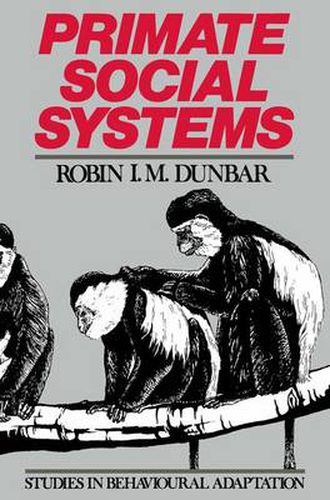Readings Newsletter
Become a Readings Member to make your shopping experience even easier.
Sign in or sign up for free!
You’re not far away from qualifying for FREE standard shipping within Australia
You’ve qualified for FREE standard shipping within Australia
The cart is loading…






This title is printed to order. This book may have been self-published. If so, we cannot guarantee the quality of the content. In the main most books will have gone through the editing process however some may not. We therefore suggest that you be aware of this before ordering this book. If in doubt check either the author or publisher’s details as we are unable to accept any returns unless they are faulty. Please contact us if you have any questions.
This book grew from small beginnings as I began to find unexpected patterns emerging from the data in the literature. The more I thought about the way in which primate social systems worked, the more interesting things turned out to be. I am conscious that, at times, this has introduced a certain amount of complexity into the text. I make no apologies for that: what we are dealing with is a complex subject, the product of evolutionary forces interacting with very sophisticated minds. None the less, I have done my best to explain every thing as clearly as I can in order to make the book accessible to as wide an audience as possible. I have laid a heavy emphasis in this book on the use of simple graphical and mathematical models. Their sophistication, however, is not great and does not assume more than a knowledge of elementary probability theory. Since their role will inevitably be misunderstood, I take this opportunity to stress that their function is essentially heuristic rather than explanatory: they are designed to focus our attention on the key issues so as to point out the directions for further research. A model is only as good as the questions it prompts us to ask. For those whose natural inclination is to dismiss modelling out of hand, I can only point to the precision that their use can offer us in terms of hypothesis-testing.
$9.00 standard shipping within Australia
FREE standard shipping within Australia for orders over $100.00
Express & International shipping calculated at checkout
This title is printed to order. This book may have been self-published. If so, we cannot guarantee the quality of the content. In the main most books will have gone through the editing process however some may not. We therefore suggest that you be aware of this before ordering this book. If in doubt check either the author or publisher’s details as we are unable to accept any returns unless they are faulty. Please contact us if you have any questions.
This book grew from small beginnings as I began to find unexpected patterns emerging from the data in the literature. The more I thought about the way in which primate social systems worked, the more interesting things turned out to be. I am conscious that, at times, this has introduced a certain amount of complexity into the text. I make no apologies for that: what we are dealing with is a complex subject, the product of evolutionary forces interacting with very sophisticated minds. None the less, I have done my best to explain every thing as clearly as I can in order to make the book accessible to as wide an audience as possible. I have laid a heavy emphasis in this book on the use of simple graphical and mathematical models. Their sophistication, however, is not great and does not assume more than a knowledge of elementary probability theory. Since their role will inevitably be misunderstood, I take this opportunity to stress that their function is essentially heuristic rather than explanatory: they are designed to focus our attention on the key issues so as to point out the directions for further research. A model is only as good as the questions it prompts us to ask. For those whose natural inclination is to dismiss modelling out of hand, I can only point to the precision that their use can offer us in terms of hypothesis-testing.